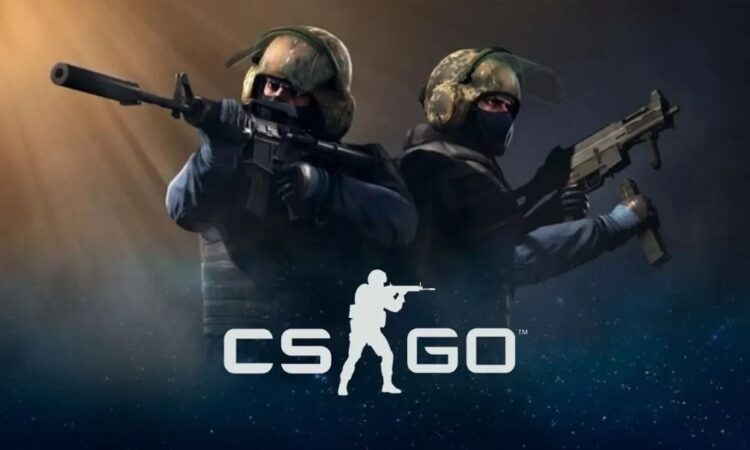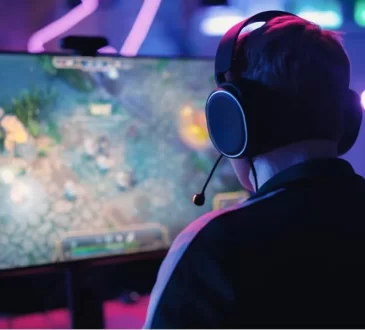
Introduction:
Counter-Strike: Global Offensive (CS:GO) is one of the most popular online multiplayer games in the world. The game has captivated millions of players worldwide with its intense gameplay, intricate strategies, and competitive spirit. However, beyond its gameplay, CS:GO has also become a cultural phenomenon that reflects the values and beliefs of contemporary society.
One aspect that characterizes CS:GO’s cultural significance is its gaming communities. The game’s popularity has led to the formation of various online communities that share similar interests and values. These communities range from casual players to professional gamers who compete in international tournaments for cash prizes. Each community has unique characteristics that reflect their members’ social identities, such as age, gender, ethnicity, and nationality.
Another significant aspect of CS:GO’s cultural analysis is its representation of gender. Like many other video games, CS:GO depicts gender roles and stereotypes that are prevalent in society. Women are often underrepresented or portrayed as sexual objects in video games, which perpetuates harmful attitudes towards women in gaming culture. However, some female gamers have challenged these stereotypes by forming all-women teams and breaking into professional esports.
Overall, this essay will explore how CS:GO reflects contemporary culture through its gaming communities and gender representation while highlighting the ways in which it reinforces or challenges societal norms.
Gaming Communities:
Gaming communities have become a phenomenon in the world of video games. These communities are formed by gamers who share similar interests, and they come together to discuss, compete, and collaborate on various aspects of the game. The Counter-Strike: Global Offensive (CS:GO) community is one such example that has taken the gaming world by storm. The CS:GO community is known for its passionate players who take their gameplay very seriously. They come together to form teams, participate in tournaments, and engage in fierce competition with other players from around the world.
The CS:GO community is not only about competition; it is also about camaraderie and friendship among fellow gamers. Players often form close bonds with each other as they spend countless hours playing together online or at LAN parties. These bonds extend beyond just playing the game; many players stay connected through social media platforms and even meet up in real life to attend gaming events or simply hang out.
One unique aspect of gaming communities like CS:GO is their ability to transcend geographical boundaries. Players from different parts of the world can come together virtually to play against each other or team up for a common goal. This creates a sense of global unity among players who may never have met otherwise.
However, as with any community, there are also negative aspects that cannot be ignored. The CS:GO community has been criticized for its toxicity towards new players or those who do not perform well during gameplay. This toxic behavior can range from verbal abuse to outright harassment and can be detrimental to both the individual player and the overall health of the community.
Gaming communities like CS:GO have become an integral part of modern-day gaming culture. They provide a platform for gamers to connect with others who share similar interests while also fostering healthy competition and camaraderie among players from all over the world. While there are negative aspects that need addressing, these communities offer a unique opportunity for individuals to come together and form meaningful connections through their shared love of gaming.
Gender Representation:
Gender representation is a complex and multifaceted issue within the world of CS:GO. From the characters themselves to the players and community, gender plays a significant role in shaping the cultural landscape of this game. On one hand, CS:GO offers a diverse cast of playable characters that includes both male and female options. However, these representations are not equal. Male characters are often portrayed as tough and aggressive, while female characters are sexualized and objectified. This creates a dichotomy between men as active agents in the game world and women as passive objects to be looked at or pursued.
This gendered representation extends beyond just character design to player behavior and community norms. Women are vastly underrepresented in professional play, with only a handful of female professional players compared to their male counterparts. This disparity can be attributed to many factors such as societal pressure against women in gaming or lack of resources for developing female talent. The result is that women are often marginalized within the competitive scene, leading to exclusionary practices like all-male teams or sexist language directed towards female players.
Moreover, gender representation affects how CS:GO is perceived by its audience on a broader level. The game’s focus on violence and aggression reinforces traditional masculine values while simultaneously marginalizing femininity. As such, it perpetuates ideas about what it means to be “masculine” or “feminine,” which can have real-world implications for how people interact with each other outside of the game.
Gender representation is an essential aspect of CS:GO’s cultural analysis because it shapes how we understand the game itself as well as its larger social impact. While some progress has been made towards more inclusive representations of gender within the game world, much work remains to be done in terms of addressing systemic sexism in gaming culture at large. Ultimately, only by acknowledging these issues can we hope to create a more equitable playing field for all gamers regardless of their gender.
Conclusion:
In conclusion, the cultural analysis of CS:GO has revealed a complex and dynamic gaming community that is shaped by various factors, including gender representation. The gaming community is not a homogenous entity, but rather a diverse group of individuals who share similar interests in playing video games. The social dynamics within the gaming community are shaped by various factors such as age, gender, ethnicity, and socio-economic status.
The gender representation in CS:GO is an important issue that has been highlighted through this analysis. The lack of female representation in the game and the wider gaming industry is a significant problem that needs to be addressed. Gender stereotypes within the game and its culture have also been identified as problematic.
Overall, this cultural analysis highlights the importance of understanding the complexities of gaming communities such as CS:GO. It is essential to recognize that these communities are not monolithic entities but rather consist of diverse groups with different experiences and perspectives. Addressing issues such as gender representation requires a multifaceted approach that involves changes both within the game itself and in wider society.
As we move forward into an increasingly digital world where online communities are becoming more prevalent than ever before, it is essential to continue examining how they operate and what impact they have on our society. By doing so, we can work towards creating inclusive spaces where everyone can feel welcome regardless of their background or identity. Learn more at csgo book.






